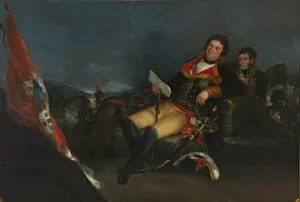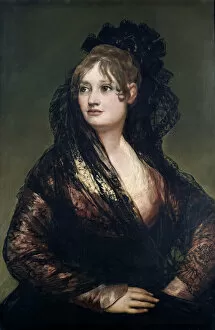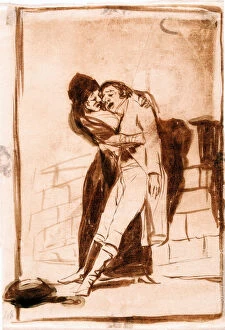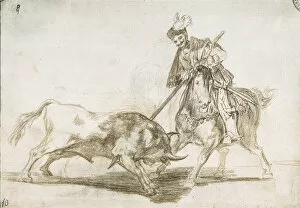Goya Francisco De 1746 1828 Collection (#8)
Francisco de Goya (1746-1828) was a renowned Spanish artist whose works spanned various genres and styles
For sale as Licensed Images
Choose your image, Select your licence and Download the media
Francisco de Goya (1746-1828) was a renowned Spanish artist whose works spanned various genres and styles. From his early paintings like "Boys Playing at Soldiers" to his provocative masterpieces such as "The Nude Maja, " Goya's art captivated audiences with its realism and emotional depth. In addition to his paintings, Goya also excelled in other mediums, including etchings and engravings. His series "The Art of Bullfighting" showcased the intensity and drama of this traditional Spanish sport, featuring iconic figures like Pedro Romero killing the halted bull. Goya's talent extended beyond capturing moments of action; he also delved into portraiture with pieces like "The Family of the Infant Don Luis of Bourbon. " These portraits revealed his ability to convey both individual character and familial relationships through exquisite brushwork. One notable aspect of Goya's work is his exploration of social commentary. In his series titled "Proverbs, " he depicted thought-provoking scenes that conveyed moral lessons through riddles. This blend of creativity and symbolism showcased Goya's mastery in conveying complex ideas through visual storytelling. Throughout his career, Goya continued to experiment with different themes and techniques. His equestrian portrait of Philip III demonstrated an appreciation for Baroque art while showcasing his skillful drawing abilities by replicating Velazquez paintings. However, it was in works like "Wrong Until Death" from the series "Los Caprichos" that Goya truly pushed boundaries. Through etching and burnished aquatint techniques, he created haunting images that critiqued societal norms during Romanticism. Goya's fascination with bullfighting persisted throughout many artworks, including depictions such as "Dreadful Events in the Front Rows. " These etchings captured not only the spectacle but also portrayed tragic incidents within this dangerous sport. "The Disasters of War" further exemplified Goya's ability to convey the horrors of conflict.








